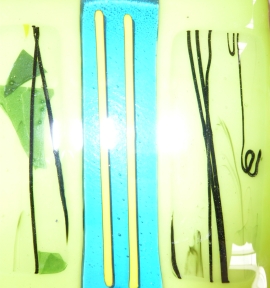Malkuth’s a matrix of the divine, natural, and human worlds, the context for what we experience as life. The word means kingdom. It’s an expressive conduit for all higher energies and the landing zone for your personal form of reality. Malkuth is seen an ongoing expression of creation: How you live your life, interacting with all the energies you’ve been exploring the past six weeks, creates the context for your happiness and evolution, and your progress with your karmic homework.
When your personal kingdom is filled with great gifts or great challenges, it’s partly a message from the universe saying, Wake up and pay good/better attention.
Malkuth is about being present. About living with awareness and intention. Living as though each moment, each choice, each aspect of how you live matters at a soul level as well as at the level of material comfort and aspiration. That’s true whether you’re dealing with yourself or others, if you’re wrestling with your own core issues (especially habituated patterns) or trying to heal the outer world.
Malkuth is about seeing the holy spark in every element of creation. Just as Hindus greet one another with Namaste (I greet the holy within you), we need to live as though we could see that holy spark in ourselves/others in each moment. We need to treat one another, and every aspect of creation, with respect, goodness, and gratitude to make this world a sweeter and more healing place. That will likely mean stretching, especially if your path is filled with bad drivers, big health issues, or relentless temptations.
The other day one of those FaceBook quizzes came around. The kind that tells you your spirit color or totem animal based on what cities, art, or music you prefer. This one offered to identify your top five traits. Words like creative, intuitive, intelligent, spiritual, eccentric, fierce, compassionate, organized, kind, curious, etc. A wealth of desirable ways to be.
My goddaughter Wendy, whom I love from a zillion lifetimes of knowing, wrote: challenging, neurotic, demented-but-in-the-cute-way, insincere, and one short. LOL.
It got me thinking about why our malkuth can feel neurotic/annoying at some times, and all chocolate and kisses at others. We’re pretty much the same us, though clearly stuck in traffic or mud wont bring out the same virtues as a great friend or book.
It’s more than just attitude. If you don’t go slightly ballistic when you’re utterly powerless, even if you can find equanimity or patience a nanosecond later, we’re from a slightly different species.
What I learned these omer weeks, and what I’m hoping to bring back into my daily world: knowing that the more I lighten up, sweeten up, and open up, the more responsive the universe tends to be, and the more great traits I have access to. Sure, some crap is gonna fly, but maybe not as much or often or hard.
Take a moment to think about which parts of your life satisfy you and which do not. Just sit, and let the feelings wash over you as you scan your kingdom. Breathe, sigh, wonder, ponder. Invite all your best traits into this new you that you are continually making, and that will make your kingdom whole.












